1. Microwave Oven
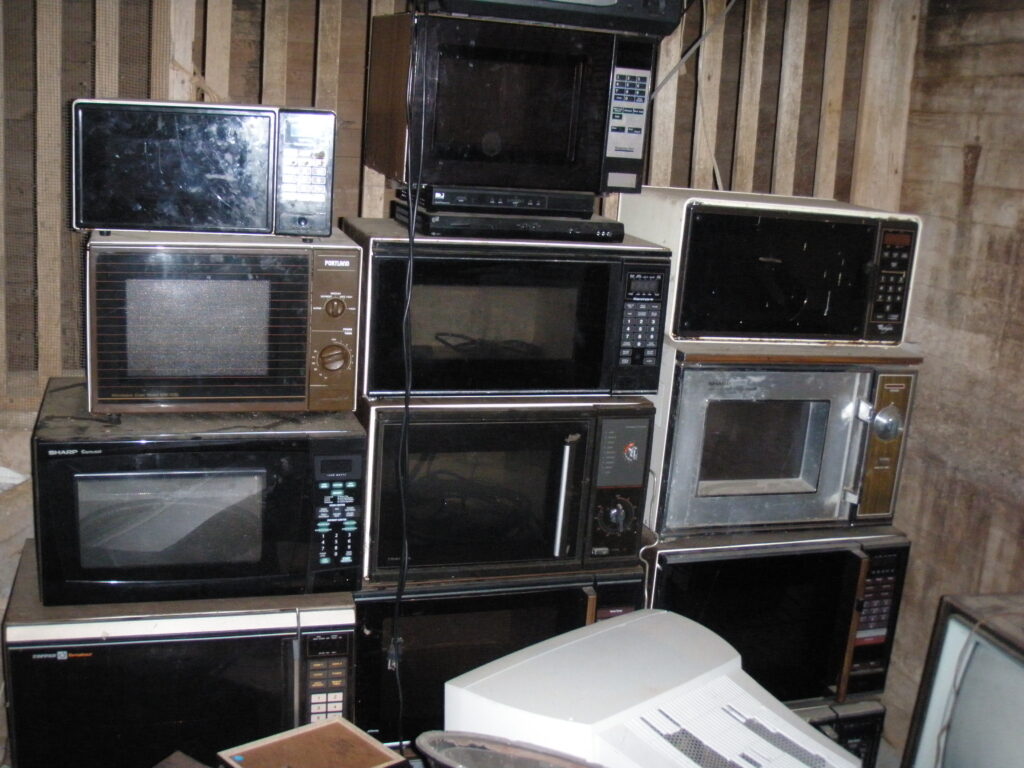
During World War II, military researchers working on radar systems made a discovery that would change kitchens forever. Percy Spencer, an engineer at Raytheon, noticed something strange while testing a magnetron, the key component of radar: a candy bar in his pocket melted during the experiments. Curious, Spencer placed popcorn kernels near the device and watched them pop, the first unofficial microwave snack. Recognizing the potential, Raytheon quickly developed the “Radarange,” a microwave-powered oven originally designed for military food preparation. Early models were enormous, standing nearly six feet tall and weighing over 700 pounds.
After the war, the technology slowly transitioned into civilian life. The first consumer microwaves were released in the late 1960s, still bulky and expensive, but revolutionary. As prices dropped and sizes shrank, the microwave became a kitchen staple across the world. Today, it’s estimated that more than 90% of American homes have one, forever changing how we cook, reheat, and even snack. All thanks to a curious engineer and an accidentally melted candy bar on a military base. Source: Smithsonian Magazine
2. Duct Tape

During World War II, American soldiers needed a waterproof tape that could seal ammunition cases quickly and reliably. The military turned to Johnson & Johnson, where a factory worker and mother named Vesta Stoudt proposed a flexible, cloth-backed adhesive. Her idea was simple but genius: create a tape strong enough to resist water, dirt, and rough handling while still being easy to tear by hand. The result was a green, army-standard tape that kept bullets dry in combat zones and could be ripped to size without tools—a literal lifesaver on the battlefield.
After the war, soldiers brought the tape home and found countless new uses for it around the house. It was soon repackaged for civilian use and renamed “duct tape” during the housing boom of the 1950s, when it became the go-to fix for sealing heating ducts. Today, duct tape is a symbol of American ingenuity, with uses ranging from emergency car repairs to crafting prom dresses, thanks to a wartime mother who refused to take “no” for an answer. Source: National WWII Museum
3. GPS (Global Positioning System)
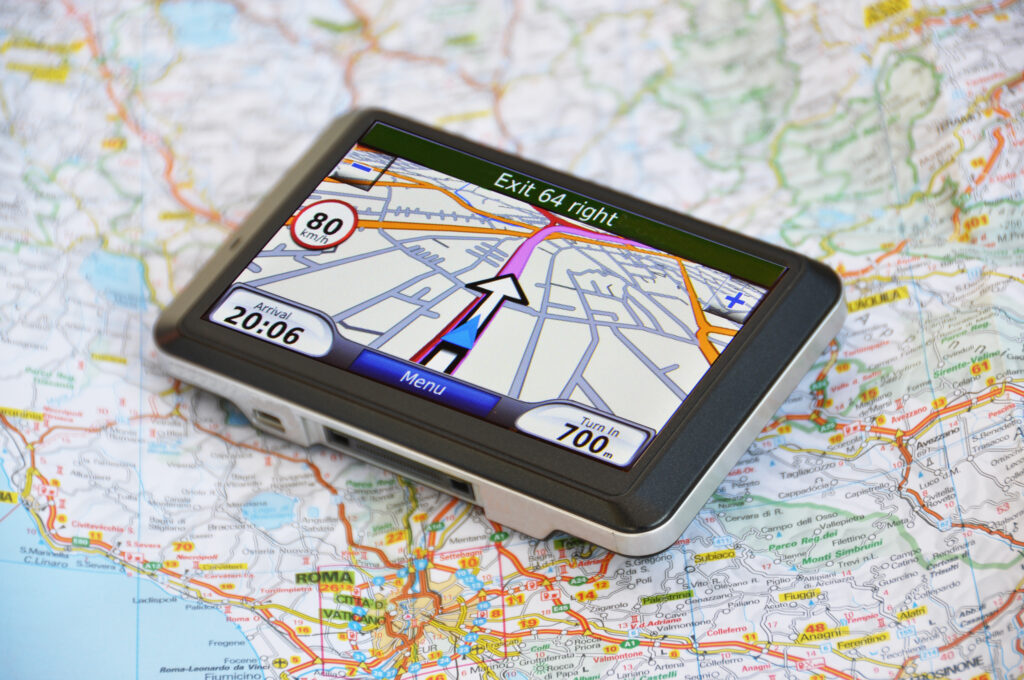
The GPS you rely on to navigate traffic or find the nearest coffee shop had its beginnings in the Cold War arms race. In 1957, when the Soviet Union launched Sputnik, American scientists realized they could track the satellite’s radio signals to determine its exact location. This breakthrough inspired the U.S. Department of Defense to develop a system that could pinpoint positions on Earth with unprecedented accuracy, a critical tool for guiding nuclear submarines and missiles. By the 1970s, the military launched the first satellites of what would become the Global Positioning System, designed to give soldiers and commanders a precise tactical advantage anywhere in the world.
It wasn’t until the late 1990s that GPS became widely available for civilians, after President Bill Clinton ordered the military to stop scrambling civilian signals. Suddenly, anyone with a GPS receiver could know their exact location within a few feet. Today, GPS is essential not just for navigation but for everything from banking transactions to disaster response. The world’s most trusted guide started out as a military solution to a Cold War problem, and now, it’s hard to imagine life without it. Source: U.S. Government GPS History
4. Aviator Sunglasses
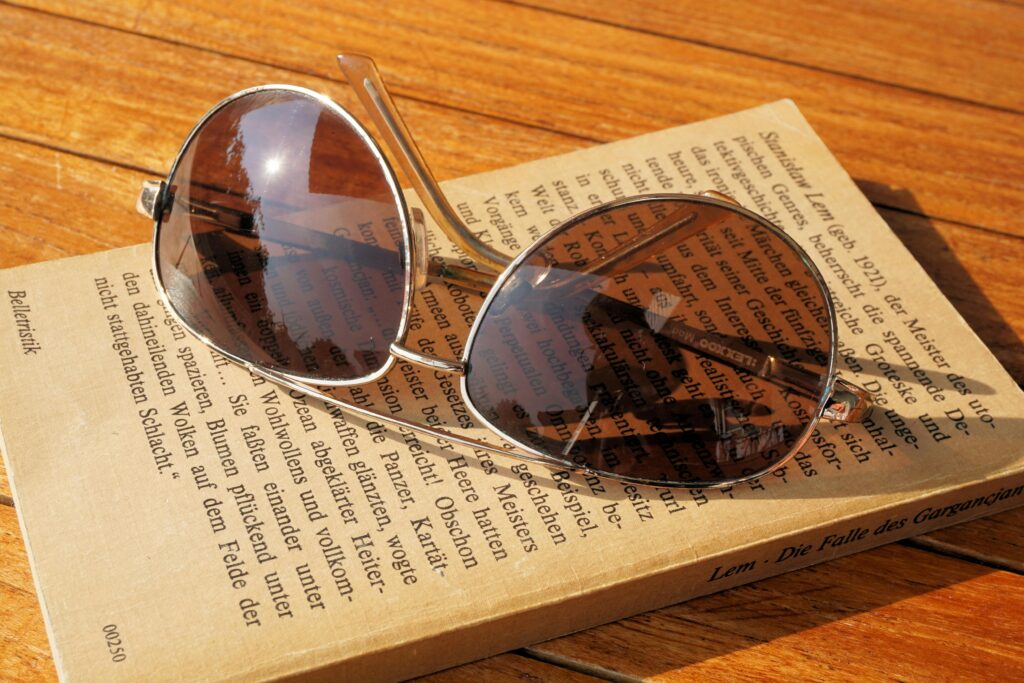
In the 1930s, pilots flying at high altitudes faced a serious problem: intense sunlight that could cause headaches, blurred vision, and dangerous disorientation. The U.S. Army Air Corps partnered with Bausch & Lomb to create a specialized lens that could protect pilots’ eyes without distorting their field of view. The result was a sleek, teardrop-shaped design that fit snugly under flight helmets and oxygen masks, featuring green lenses to filter out ultraviolet and infrared rays. These “Anti-Glare” glasses, as they were originally called, quickly became essential equipment for military aviators battling glare over bright cloud cover and snow-capped terrain.
After World War II, Aviator sunglasses surged into civilian culture, carried home by soldiers and made famous by Hollywood legends like James Dean and Marlon Brando. By the 1950s, Ray-Ban’s Aviators weren’t just functional, they were a full-blown fashion statement, symbolizing rebellion, freedom, and American cool. Over the decades, they’ve been worn by rock stars, presidents, and supermodels alike, proving that a battlefield necessity could evolve into one of the most recognizable and enduring style icons of the 20th century. Source: Ray-Ban Official History
5. Canned Food

The idea of canned food was born out of one of history’s most persistent military challenges: feeding armies on the move. In 1795, during the Napoleonic Wars, the French government offered a cash prize to anyone who could develop a reliable method of food preservation for troops fighting far from supply lines. Nicolas Appert, a Parisian chef and confectioner, spent over a decade experimenting before discovering that food sealed in glass jars and heated could stay edible for months. Although his method involved jars, the process was soon adapted to metal cans by British inventors, making it easier to mass-produce rations for soldiers heading into battle.
Canned food revolutionized military logistics, allowing armies to march farther and fight longer without relying on fresh supplies. After its success in the military, canned goods spilled over into civilian life, especially during the industrial boom of the 19th century. By the time of the American Civil War, canned foods like peaches, condensed milk, and salted meats were household staples. Today, whether you’re reaching for a can of soup on a rainy day or stocking an emergency kit, you’re benefiting from a preservation technique originally designed to keep soldiers alive on distant frontlines. Source: History.com
6. Internet

Long before it became a place for memes, shopping, and cat videos, the internet was a military experiment designed to survive a nuclear war. In the 1960s, at the height of Cold War tensions, the U.S. Department of Defense’s Advanced Research Projects Agency (ARPA) developed ARPANET, a network that could link computers across vast distances without a single point of failure. The goal was clear: if one node was destroyed, information could still reroute through other nodes, keeping military communications alive in the event of an attack. The first message ever sent over ARPANET, in 1969, was supposed to be “LOGIN”, but the system crashed after just the first two letters.
Over the next two decades, ARPANET evolved beyond defense, connecting universities, researchers, and eventually businesses. By the 1990s, a British computer scientist named Tim Berners-Lee introduced the World Wide Web, making the system navigable for ordinary users. What started as a hardened military communication tool exploded into the backbone of modern life, transforming everything from education to commerce, entertainment, and relationships. Every time you check your email or binge a series online, you tap into a network built with bomb-proof resilience. Source: DARPA
7. Disposable Diapers

Though disposable diapers are now a parenting staple, they owe part of their early development to military survival needs. During World War II and into the Cold War era, researchers looked for ways to help soldiers operating in extreme conditions where bathroom breaks were impossible—like pilots on long missions or soldiers trapped in remote outposts. Scientists experimented with highly absorbent materials, eventually leading to the creation of lightweight, disposable undergarments that could keep troops dry without risking infection or exposure. These military prototypes used early versions of the superabsorbent polymers that would later revolutionize diaper technology.
In the 1950s, this research inspired innovators like Marion Donovan and later companies like Procter & Gamble, who adapted the materials and concepts for civilian use. Donovan’s early designs combined absorbent layers with waterproof barriers, leading to the mass-market disposable diaper boom in the 1960s. Today, the disposable diaper industry is worth more than $70 billion globally, providing convenience and hygiene for millions of families—an everyday comfort that can trace its messy beginnings back to battlefield necessity.
Source: Smithsonian Magazine
8. Wristwatches
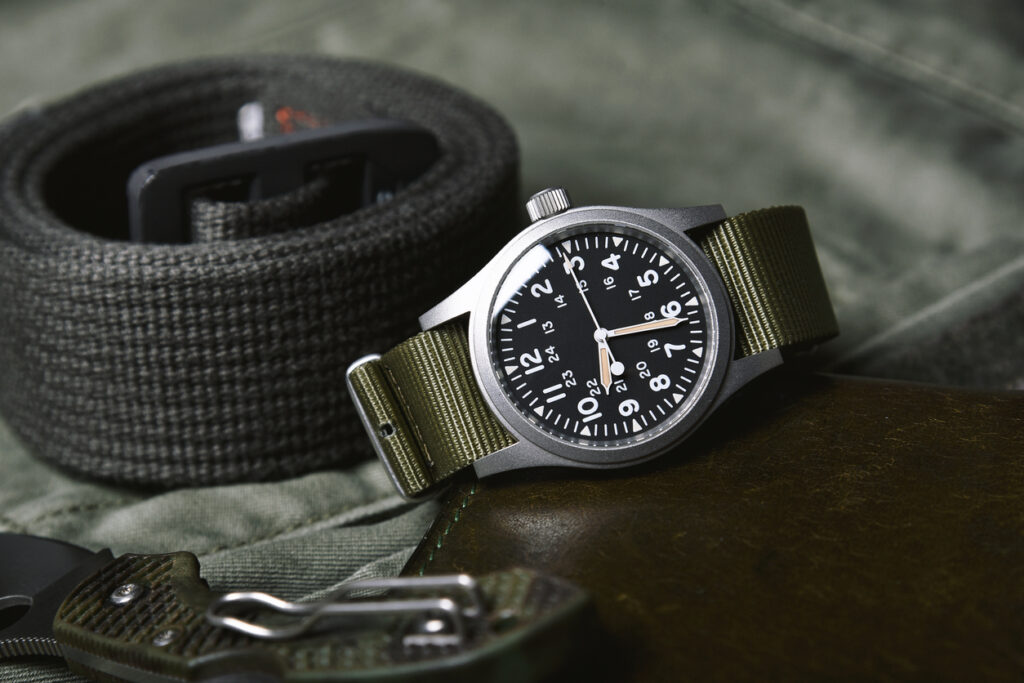
Before the 20th century, pocket watches were the standard way to tell time—but they were far from practical on the battlefield. During World War I, soldiers in the trenches needed a way to quickly check the time while keeping their hands free for weapons and equipment. The solution was to strap small clocks to their wrists, often modifying pocket watches with crude leather straps. These “trench watches” became essential for coordinating attacks, timing artillery barrages, and maintaining synchronized movements across muddy, chaotic front lines. Officers quickly realized that glancing at a wrist was far more efficient (and safer) than fumbling for a pocket watch under fire.
After the war, returning soldiers brought their wristwatches home, and what had once been considered a feminine accessory became a rugged symbol of modern masculinity. Watchmakers seized the moment, refining designs with luminous dials, shock protection, and water resistance. By the 1920s and ’30s, wristwatches had fully eclipsed pocket watches for everyday use. Today, whether you wear a high-end chronograph or a simple digital watch, you’re continuing a timekeeping tradition born out of wartime necessity and battlefield ingenuity. Source: WatchTime Magazine
9. Instant Coffee

In the chaos of war, soldiers needed a quick, reliable caffeine fix to stay alert during long, grueling missions. During World War I, instant coffee emerged as a battlefield essential when companies like George Washington Coffee refined the process of dehydrating brewed coffee into a soluble powder. Soldiers could easily mix it with hot water in the trenches, skipping the complicated brewing process. It wasn’t exactly gourmet, many compared the taste to burnt socks, but it provided a fast jolt of energy that kept tired troops functioning during brutal campaigns.
Instant coffee became even more entrenched during World War II, when companies like Nestlé improved the process to mass-produce it for Allied forces under the Nescafé brand. After the war, soldiers returned home already accustomed to the convenience, helping instant coffee take off in civilian markets. Today, while specialty brews dominate cafes, instant coffee still fuels millions of busy mornings, and its roots remain forever tied to the mud and urgency of wartime survival. Source: Nestlé History
10. Superglue
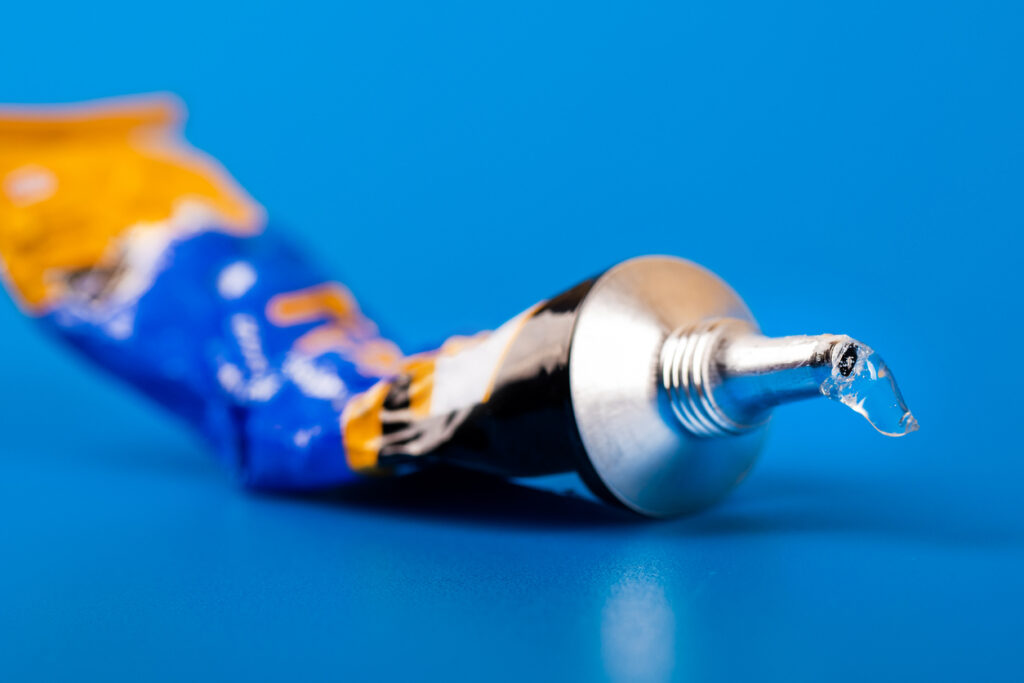
Superglue wasn’t invented for crafting or quick home fixes, it was a wartime accident. In 1942, while working to create clear plastic gun sights for rifles during World War II, Dr. Harry Coover at Eastman Kodak stumbled upon a substance called cyanoacrylate. It turned out to be far too sticky for gun sights, but its adhesive strength was unparalleled. Although initially shelved, it was later rediscovered and adapted for emergency medical use in the Vietnam War, where medics used it to temporarily close wounds and stop bleeding on the battlefield when immediate surgery wasn’t an option.
In the civilian world, Superglue exploded in popularity during the 1950s, when it was finally marketed for everyday repairs. From fixing broken eyeglasses to patching up ceramics, it quickly became a household necessity. Today, it’s used not only in homes but also in industries ranging from medicine to aerospace, all thanks to a failed military project that accidentally produced one of the stickiest substances ever invented. Source: American Chemical Society
11. Penicillin Mass Production
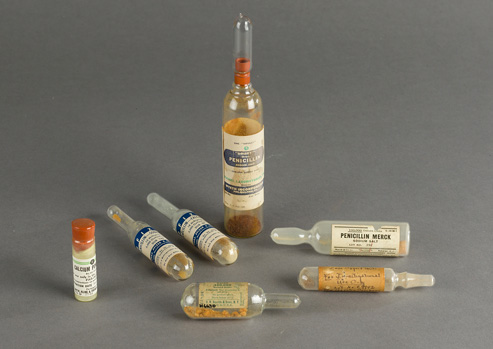
While Alexander Fleming famously discovered penicillin in 1928, it wasn’t until World War II that it truly became the life-saving powerhouse we know today. As casualties mounted across European and Pacific battlefields, infections like sepsis were killing more soldiers than bullets. The U.S. and British governments launched a crash program to mass-produce penicillin, enlisting pharmaceutical companies and even using fermentation tanks designed for beer brewing to scale up production. Thanks to this wartime effort, penicillin became widely available to treat wounded soldiers, and dramatically slashed battlefield deaths from infection.
After the war, penicillin’s availability revolutionized civilian medicine. Once considered a miracle drug, it opened the door to the modern antibiotic era, saving millions of lives from illnesses that once meant certain death. Today, antibiotics are a routine part of surgeries, dental work, and everyday infections, but the rapid development and mass distribution of penicillin wouldn’t have happened without the desperate urgency of wartime necessity. Source: Centers for Disease Control and Prevention (CDC)
12. Jeep (and SUV Culture)
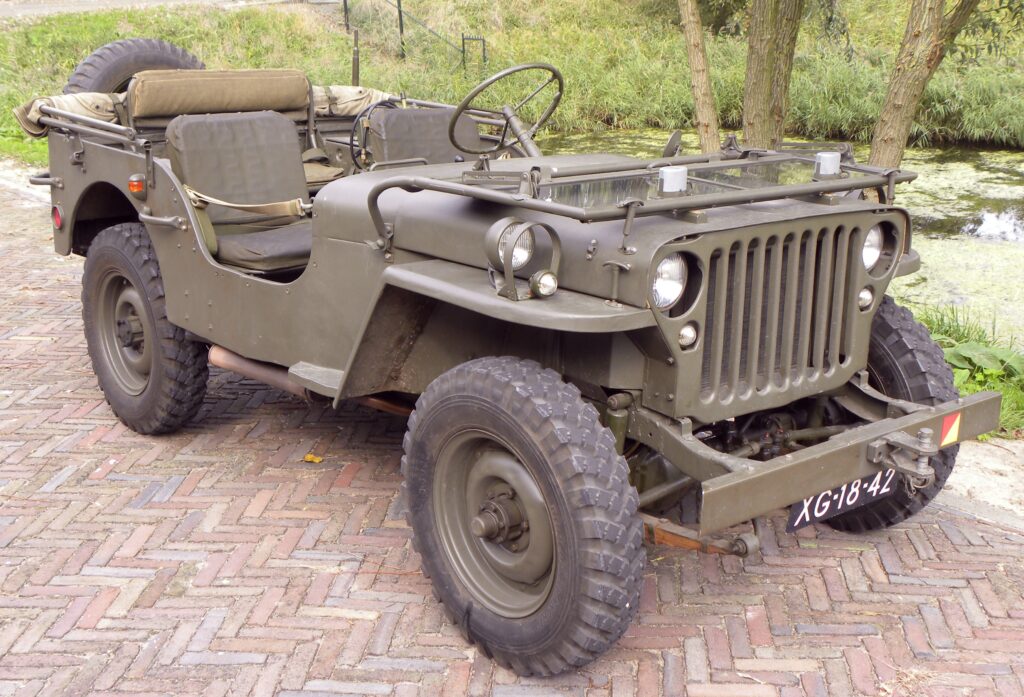
When the U.S. Army needed a rugged, reliable vehicle for World War II battlefields, they issued an urgent call to American automakers: design a light, four-wheel-drive reconnaissance car that could handle rough terrain, carry soldiers and gear, and survive brutal conditions. In a stunning 49 days, the American Bantam Car Company created the first prototype, later refined by Willys-Overland and Ford into what became known simply as the “Jeep.” Compact, tough, and endlessly adaptable, Jeeps became the workhorses of the Allied forces, slogging through mud, sand, and snow from Europe to the Pacific.
After the war, returning soldiers loved the Jeep’s toughness and versatility, helping it transition from a battlefield icon to a civilian legend. The Willys Jeep was marketed to farmers, adventurers, and eventually suburban families as a vehicle that could do it all. That rugged DNA directly inspired the rise of the modern SUV industry, a market that today generates over $1 trillion worldwide. Every time you see a gleaming SUV on the highway, you’re looking at a descendant of a battle-tested machine built to conquer the toughest terrain imaginable. Source: Jeep Official History
War may be hell, but its inventions often end up reshaping everyday life in unexpected ways. From the way we cook dinner to how we drive, communicate, and even caffeinate, military ingenuity has quietly shaped our modern routines. Next time you pop open a can of soup or check your GPS, just remember: you’re using a little piece of battlefield history—without ever having to dodge a bullet.
If you enjoyed this story, please give us a thumbs-up so we know to write more pieces like this! If you think we missed an invention, or if you have story ideas of your own, we’d love to hear from you. Drop a comment below!


